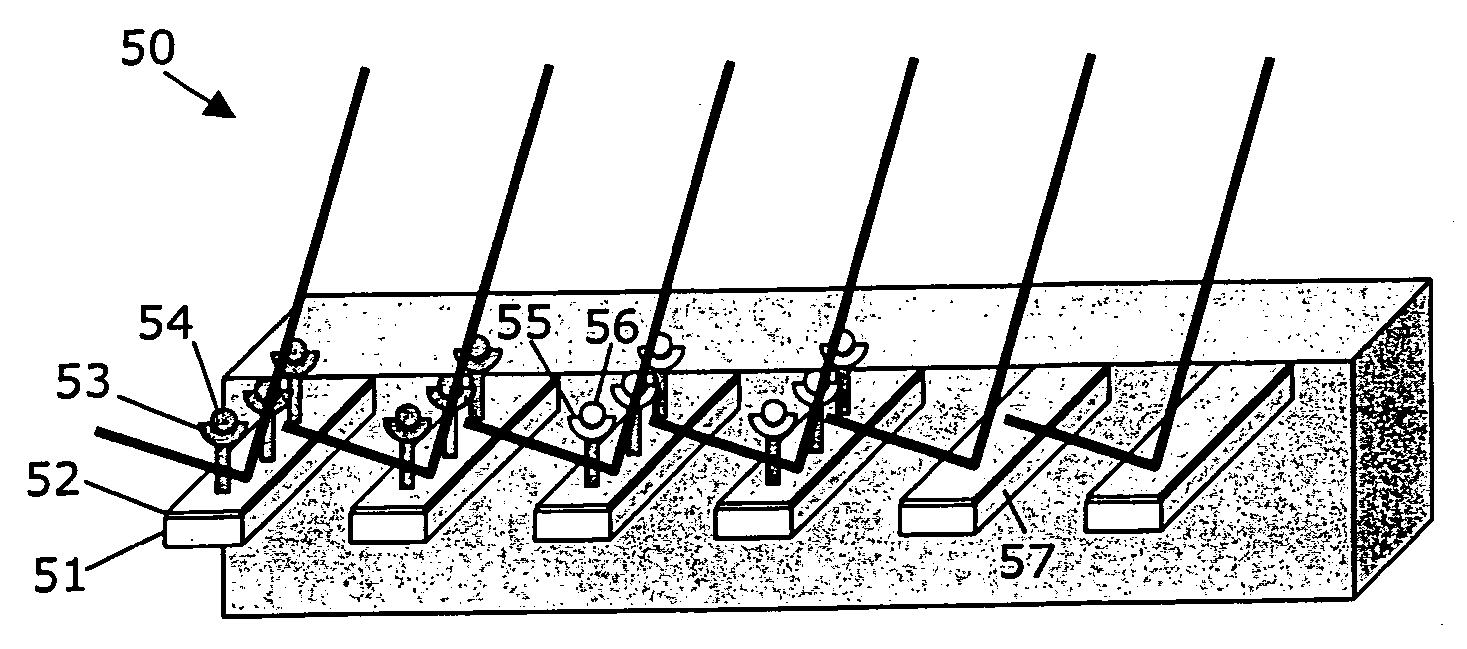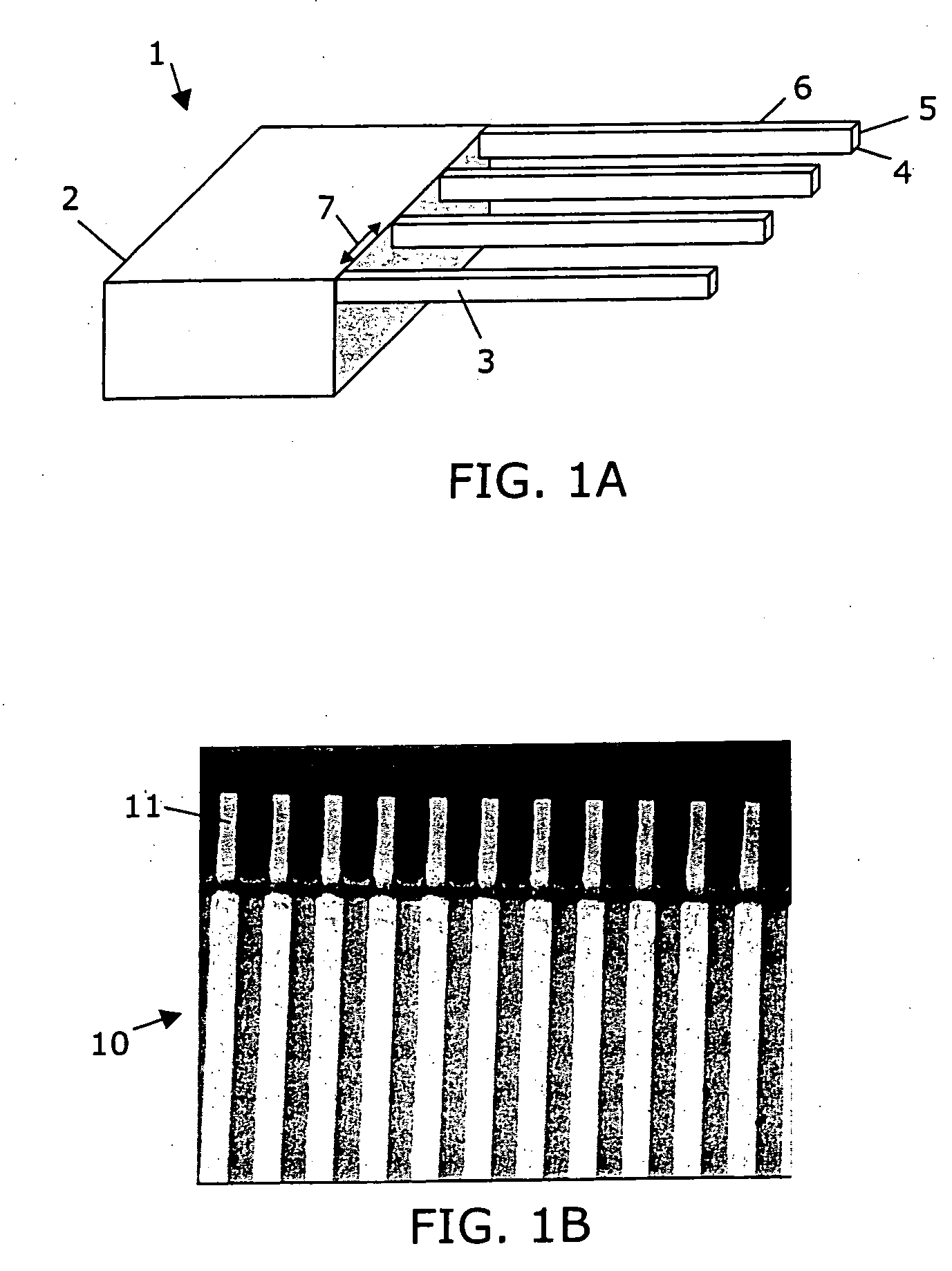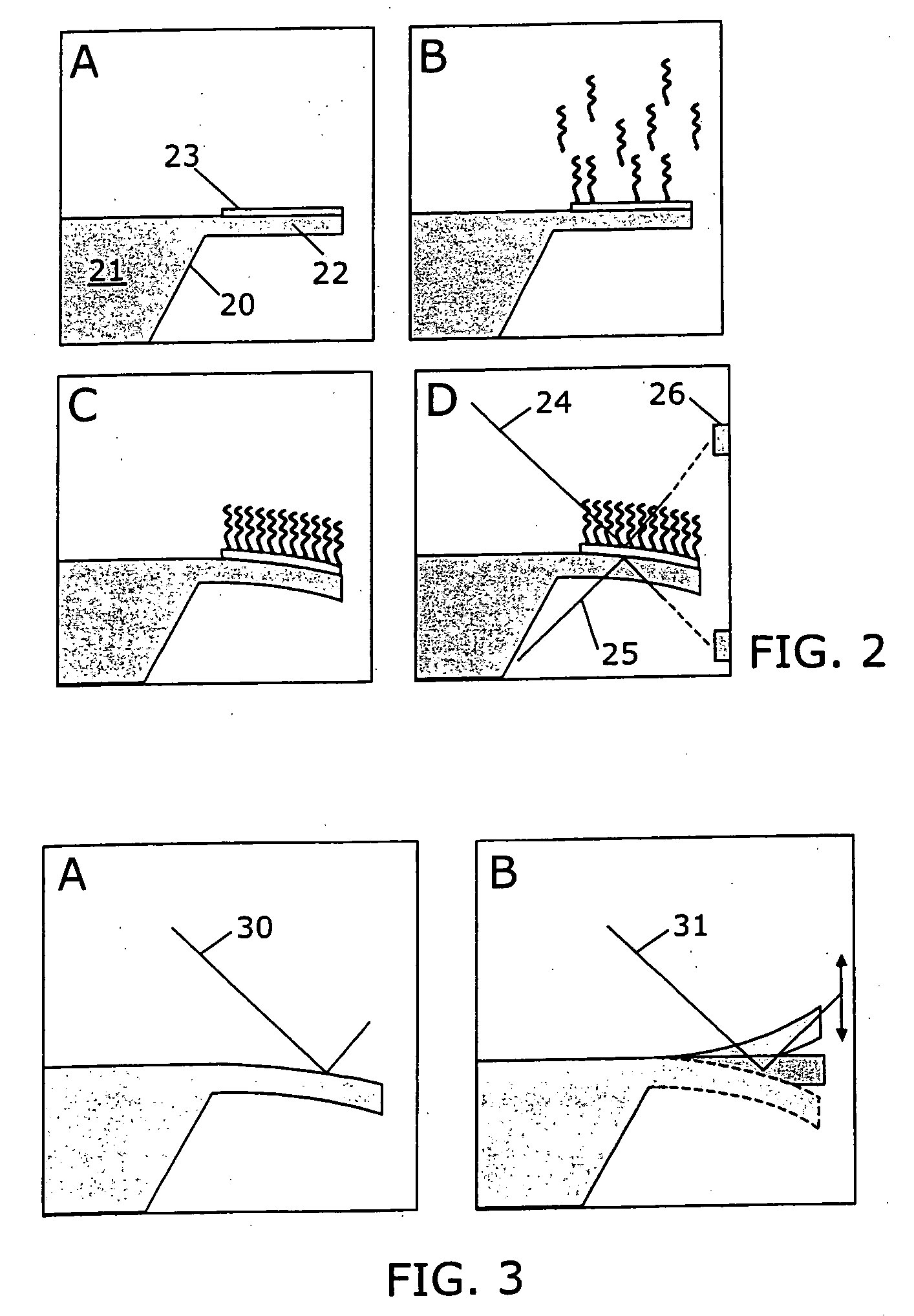Polymer-based cantilever array with optical readout
a polymer-based, cantilever array technology, applied in the field of cantilever arrays, can solve the problems of complicated silicon-based sensor fabrication and high cost of silicon-based sensors, and achieve the effects of high chemical resistance, high aspect ratio, and easy and fast processing
- Summary
- Abstract
- Description
- Claims
- Application Information
AI Technical Summary
Benefits of technology
Problems solved by technology
Method used
Image
Examples
Embodiment Construction
[0053] A schematic drawing of a polymer-based cantilever array is shown in FIG. 1A and in FIG. 1B an optical image of a cantilever array is provided.
[0054] In FIG. 1A a cantilever array 1 comprising a platform 2 and a number of cantilevers 3 is illustrated. The number of cantilevers 3 may vary, however more than two are always present, but 3-5, 5-10, or even 100 or more cantilevers, such as a multitude of cantilevers may be attached to, or protrude from, a platform. The cantilevers and the platform may be provided in different materials, however in the embodiments described here, the cantilevers and the platform are of the same material. The size and shape of the cantilevers may vary and depend upon the intended application. Here the cantilevers have a rectangular cross-section, however cantilever with a round, a quadratic or any suitable cross-section may be envisioned. For a cantilever with a rectangular cross-section a typical length 6 of a cantilever is between 100 and 200 micr...
PUM
| Property | Measurement | Unit |
|---|---|---|
| Young's modulus | aaaaa | aaaaa |
| Young's modulus | aaaaa | aaaaa |
| width | aaaaa | aaaaa |
Abstract
Description
Claims
Application Information
 Login to View More
Login to View More - R&D
- Intellectual Property
- Life Sciences
- Materials
- Tech Scout
- Unparalleled Data Quality
- Higher Quality Content
- 60% Fewer Hallucinations
Browse by: Latest US Patents, China's latest patents, Technical Efficacy Thesaurus, Application Domain, Technology Topic, Popular Technical Reports.
© 2025 PatSnap. All rights reserved.Legal|Privacy policy|Modern Slavery Act Transparency Statement|Sitemap|About US| Contact US: help@patsnap.com



